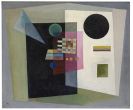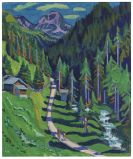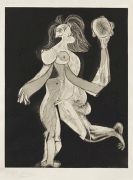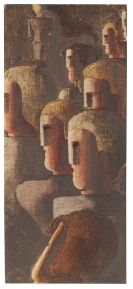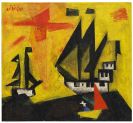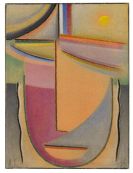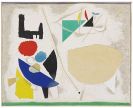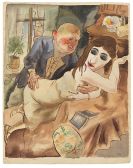
Max Raffler
Greifenberg
1902 -
1988
Max Raffler was born at Greifenberg on Lake Ammersee on 8 October 1902. A farmer's son, Raffler was not in a position to pursue a "formal" education and career as an artist nor could he travel extensively since after his parents' death he and his two sisters had to take over the farm.
However, Max Raffler did draw and paint as a child, using packaging paper as his support, which he cut to the appropriate sizes, and forms, which he painted over. Only a few of these childhood works have survived since Raffler's family had little understanding for him and no idea of his talent so they destroyed much of his work.
Nevertheless, Max Raffler's urge to paint was not blunted by this treatment. In his early years agricultural and rural motifs dominated his work but later on he was encouraged by a local priest to add biblical stories. Further sources of inspiration Raffler drew on were the long tradition of vernacular art, the rich Baroque church stucco art, carving, tinsel pictures (painted behind glass), rural wayside shrines and devotional images.
Max Raffler chose only subject matter to which he had a personal relationship: utilitarian objects from daily life, agricultural implements, work and customs, festivals and processions, the scenery in which he lived, flowers and meadow herbs, farm animals and nature.
Until he died in 1988 Max Raffler lived at Greifenberg. His work has been shown at numerous exhibitions and published in a great many books. Raffler is in fact one of Germany's best-known naive painters and his watercolours are in many collections.
Would you like to sell a work by Max Raffler?
Infos for seller
